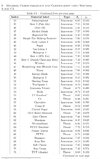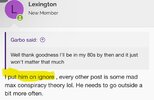So after 25,years of banning liquids, gels, or creams over 100ml on aircraft, they're now being allowed not based on the reality these machines can accurately identify the 100+ explosives and hazardous chemicals but on "BS".
View: https://youtu.be/nyG8XAmtYeQ
Relevant portions around 2 minutes and 6 minutes.
I'll add these are low end Dual Energy Computed Tomography machines. The key is two different x-ray energy levels (Dual Energy) are used to scan. which can be compared, revealing the atomic number of the material.
Where fewer are needed, as they mention are used for checked baggage, additional tech like spectral xrays (many different power levels) and backscatter sensors are added to enable even more accurate material detection. For instance, one validation test is mixing a bag of milk powder and sugar, and ensuring the machine can determine the percentage of each within the mixture.
Where extreme high speed is needed, algorithms, built on detailed analysis of targeted contraband, are being used to shorten the detection time to a fraction usually required. AI generated "shortcuts".
Since there are so many different types of equipment being used, Customs agencies around the world have agreed to standardize the format of these algorithms, so they can share them with each other as new threats and forms of contraband are identified.
The systems are so accurate, they can identify the components of a single pill (in fact pharma manufacturers are beginning to use these for quality control instead of lab analysis.
When contraband is detected in a package it's automatically kicked off the high speed conveyor so customs agents can deal with it. This means agents no longer need to watch a screen as packages pass slowly through an xray machine, and packaging inspection capacity will increase by over 1000 times what's currently possible.
Sample of materials used for testing security scanners. Note they can differentiate between styles of beer.
View attachment 292613




